Ducati 250 Mach 1
With Ian Falloon
The introduction of the Fiat 500 Bambino car in 1957 virtually decimated the Italian motorcycle industry as nearly every Italian family wanted the affordable Bambino. By the early 1960s the Bambino had effectively wiped out the market for basic two-wheeled transportation in Italy.
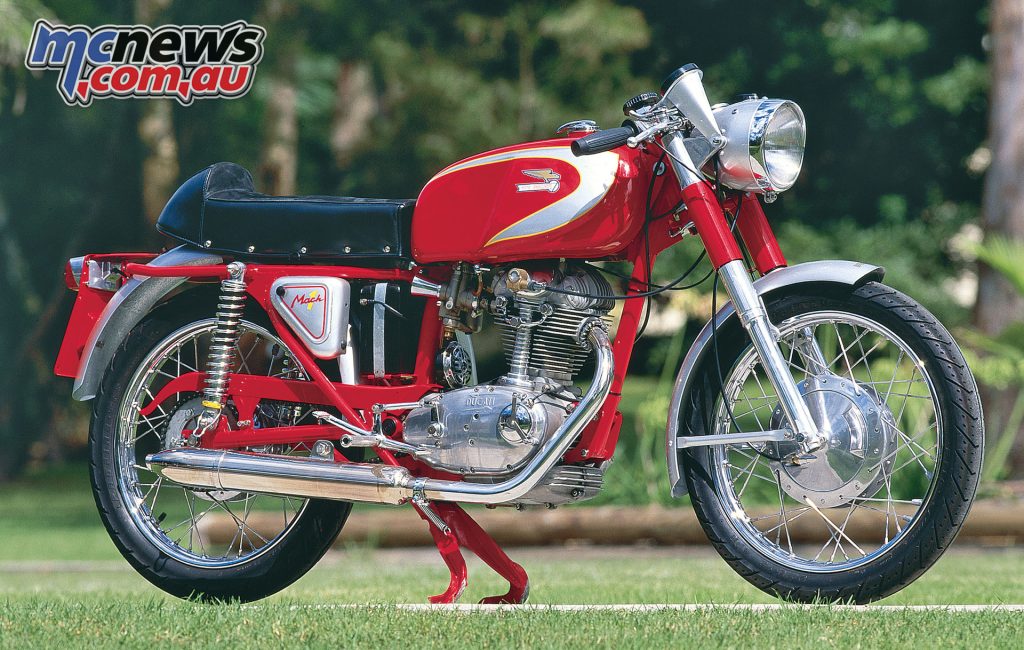
In the wake of the Fiat 500’s success many Italian motorcycle manufacturers simply disappeared and only a handful survived. They were the fortunate ones with either strong family backing (like Laverda and MV Agusta), or government ownership (like Ducati).
But government ownership came at a price. Not only was the racing program curtailed but also Ducati’s management decided the future lay in a range of unexciting two-strokes.
Fortunately there were still enough enthusiasts at the Bolognese factory to ensure the sporting spirit survived and at the end of 1964 Ducati released the 250 Mach 1.
This provided unprecedented performance for a production 250 single and stood out like a beacon in the sea of mediocre machinery that typified Ducatis of this period.
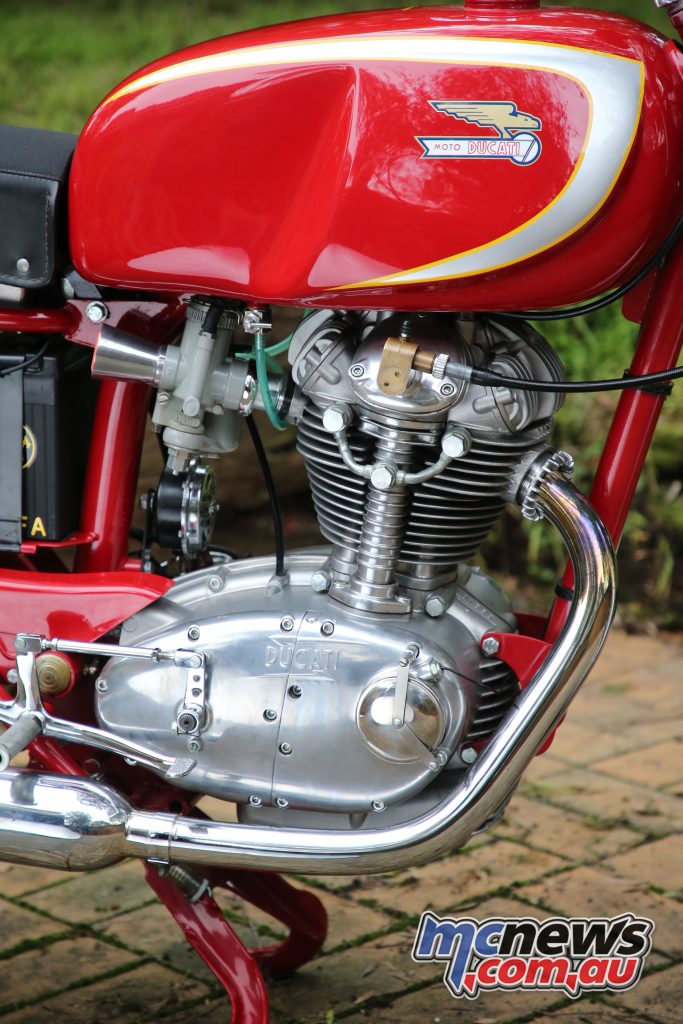
The impetus for the creation of the Mach 1 came from the Mark 3 Super Sport. This was released for club racing in the United States during 1963 and was a true production racer.
The Mark 3 Super Sport produced 30 horsepower, and featured a 10:1 compression ratio, Dell’Orto SSI 27A carburettor, magneto ignition, and a racing megaphone. Other racing equipment included clip-on handlebars, minimal mudguards, racing tyres, and a competition plate.
During 1964 the Mark 3 received a five-speed gearbox and it was a very competitive club racer. But with minimal silencing and without an effective lighting system the Mark 3 Super Sport’s market was limited. So, during 1964 Ducati developed it into a wider appealing sporting single; the 250 Mach 1.
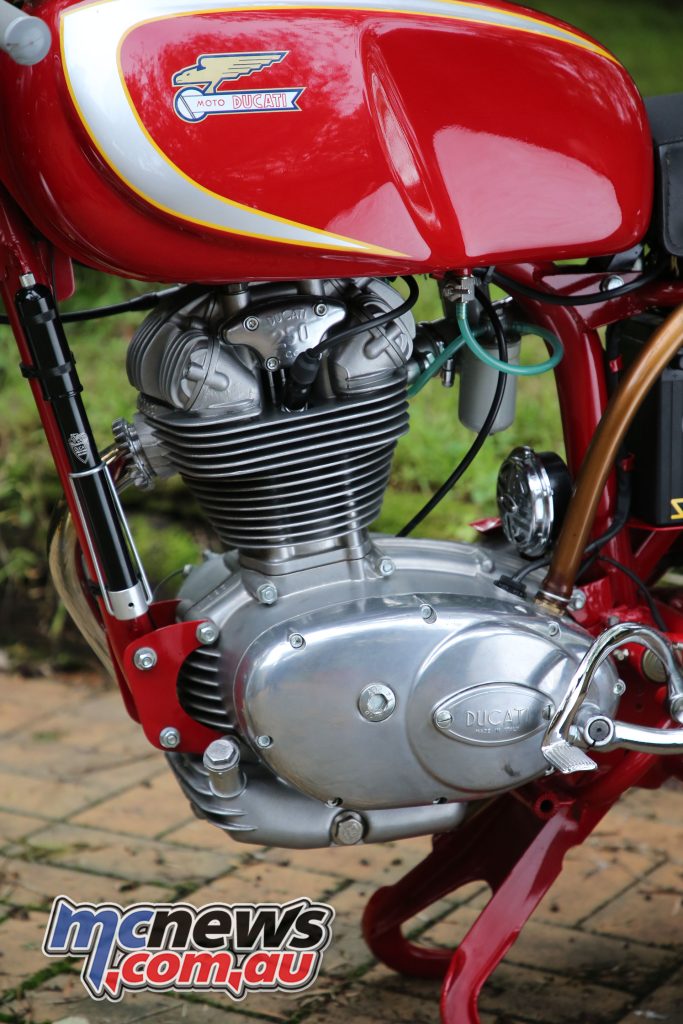
Although it was sold as a street machine the Mach 1 was even more highly tuned than the Mark 3 Super Sport. The 74 x 57.8 mm single cylinder engine was descended from the racing F3s and included a single overhead camshaft driven by a vertical shaft and bevel gears.
The Mach 1 also had a 10:1 compression ratio, but the engine featured larger (40 mm and 36 mm) valves and a hotter camshaft. As with all the overhead camshaft singles, the valve springs were the hairpin type, and with an unfiltered Dell’Orto SSI 29D carburettor and street muffler, the claimed power was 27.6 horsepower at 8,500 rpm.
As it was intended for general street use battery and coil ignition replaced the Mark 3 Super Sport’s racing magneto. A rear-set rocking gear change pedal operated the five-speed gearbox, and while the handlebars were generally a clip-on type, a rather bizarre option was a Mach 1 with rear-set foot controls and high, touring style handlebars.
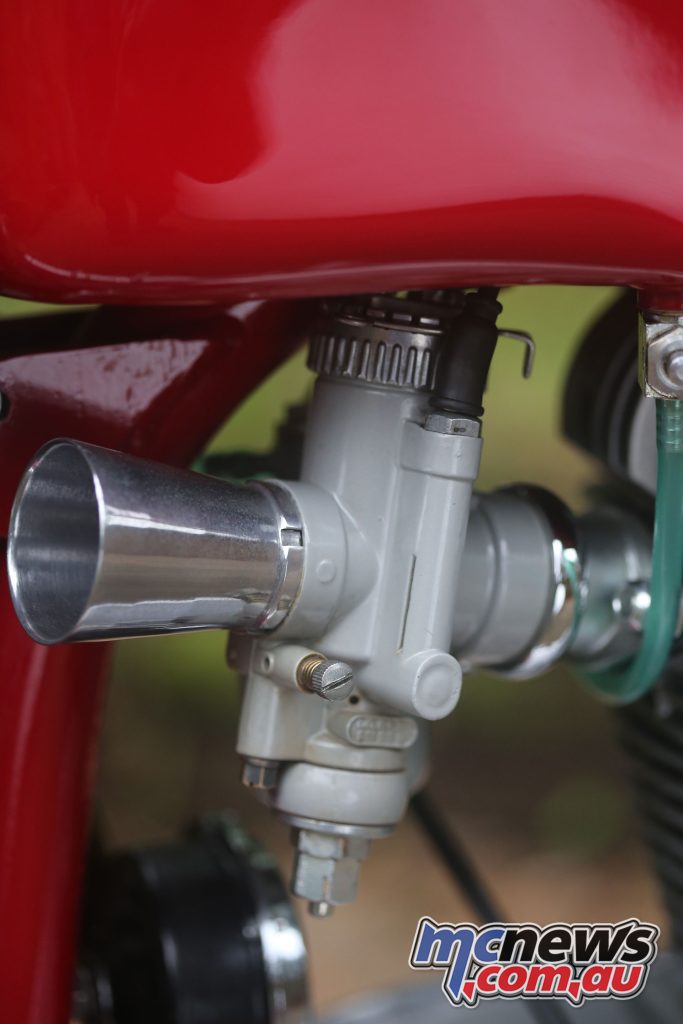
Despite the increase in alternator output to 60 Watts (from 40 Watts), the electrics remained a cause for concern, with the six-volt 25W headlight providing illumination little better than a candle. But with quality Marzocchi suspension front and rear, a modest 116 kg dry weight, and a short 1350 mm wheelbase, the Mach 1 could more than hold its own in the handling department.
The brakes were generously proportioned drums, a 180 x 35 mm on the front and 160 x 30 mm on the rear, and the wheels 18-inch with steel rims. While these components were shared with other 250 cc Ducati singles, the Mach 1 was the only one with a red frame and a wildly optimistic 240 km/h Veglia speedometer.
Although the 250 Mach 1 was fast and handled well, the large 29 mm carburettor and high compression ratio contributed to difficult starting and troublesome low speed running.
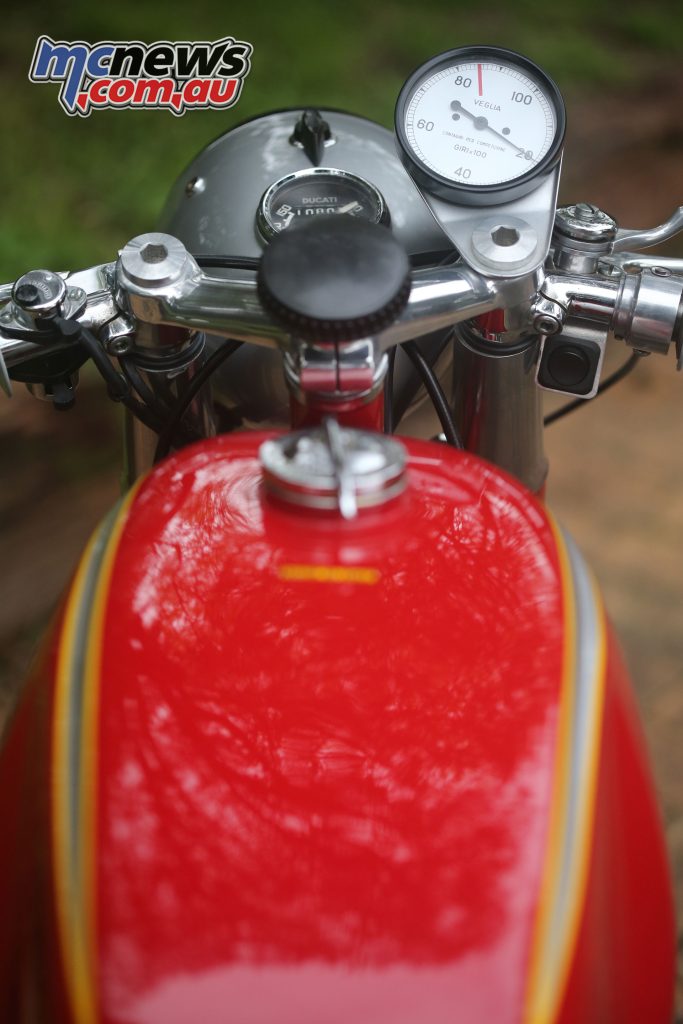
This was ultimately the Mach 1’s downfall as by the mid-1960s the Japanese were beginning to produce 250s that were equally fast, but provided easier starting and were more user friendly. The Mach 1 continued through 1966 before another Mark 3 replaced it.
While sharing the same highly tuned engine this new Mark 3 was now less of a café racer and more mainstream in style. Already Ducati was looking towards their new wide-case singles, some with Desmodromic valve gear, and for the fragile and delicate narrow-case singles their time was up.
Nearly sixty years on the 250 Mach 1 has garnered the cult status. Rare and beautiful, this was Ducati’s most outstanding production bike of the 1960s and it epitomises of the best of the overhead camshaft Ducati sporting single.
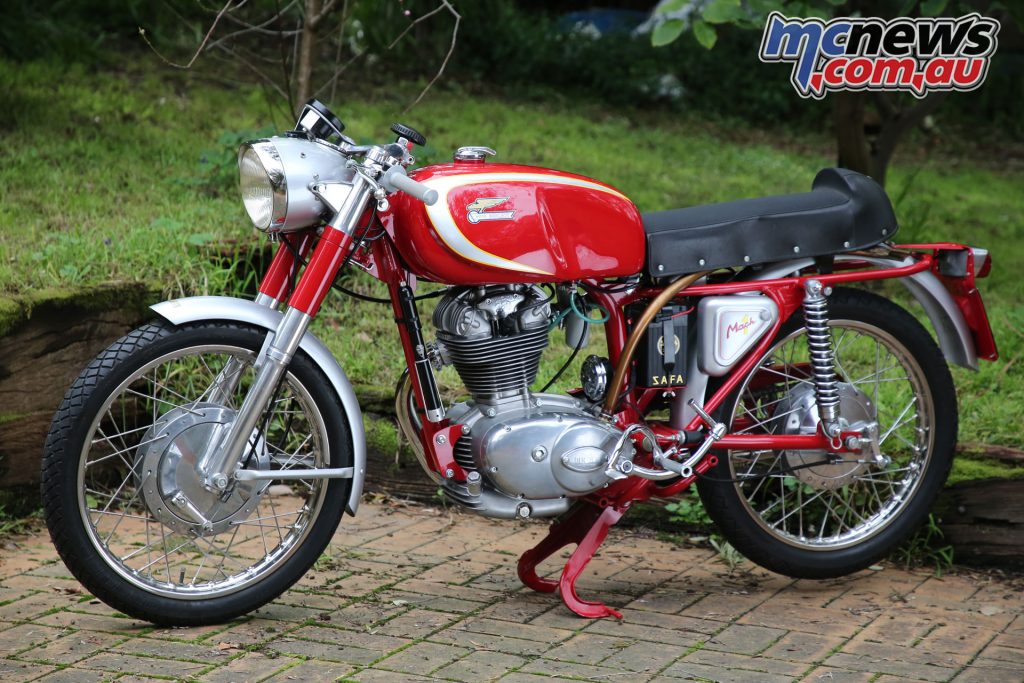
Five facts about the Ducati 250 Mach 1
- The first major racing success for the 250 Ducati was at the 1962 Barcelona 24 hour race when Ricardo Fargas and Enzo Rippa took a prototype Mototrans 250 to victory.
- When it was released, Ducati claimed the Mach 1 was the world’s fastest 250 with a top speed of 170 km/h. However, this was optimistic and no contemporary road tests substantiated this figure.
- Even after the wide-case single replaced it, the Mach 1 continued to be a favoured choice amongst privateer racers because it was considerably lighter.
- In 1969 Alistair Rogers on a Mach 1 provided Ducati their first Isle of Man TT victory. Rogers won the 250cc production race at an average speed of 134.84 km/h.
- The relatively low total production of 838 has also contributed the Mach 1’s mystique and collectability. Only 45 Mach 1’s came to Australia between 1964 and 1966.
Ducati 250 Mach 1 Specifications
Ducati 250 Mach 1 SpecificationDucati 250 Mach 1 Specifications
| Ducati 250 Mach 1 Specifications | |
| Engine | Air cooled, Four stroke, single cylinder, Desmo SOHC, bevel gear-drive |
| Capacity | 248.6 cc / 15.2 cu in |
| Bore x Stroke | 74 x 57.8 mm |
| Compression | 10:01 |
| Induction | Dell’Orto SS1 29D carburetor |
| Ignition | Battery and coil, 6V 60W generator |
| Max Power | 28 hp @ 8500 rpm |
| Clutch | Wet, multi-plate |
| Transmission | Five-speed |
| Final Drive | Chain |
| Frame | Single downtube frame with large diameter backbone tube |
| Front Suspension | 31.5 mm telescopic fork |
| Rear Suspension | Dual Marzocchi shocks, three-way adjustable |
| Front Brakes | Drum, 180 mm |
| Rear Brakes | Drum, 160 mm |
| Tyre | 2.50 x 18; 2.75 x 18 |
| Length | 2000 mm |
| Width | 590 mm |
| Height | 920 mm |
| Wheelbase | 1350 mm |
| Seat Height | 760 mm |
| Dry Weight | 116 kg |
| Fuel Capacity | 13 L |
| Top Speed | 177 km/h |























